You can still use hardener that has yellowed in the bottle, so don't throw it out! Even if the hardener has turned a little yellow, it can still be used for many projects. As long as you measure and mix properly, the chemical reaction will still occur, and the product will cure as expected.
While you might not want to use yellowed hardener on a white piece of artwork, here are got 4 different ideas for using up expired ArtResin epoxy resin:
- Coating colorful paintings
- Making alcohol ink coasters
- Tinting it to make flow art
- Applying it over wood
We'll be making these 4 projects in a side-by-side comparison using both fresh and expired ArtResin to show you that once cured, you won't be able to see a difference.
Let's get started ...
Does ArtResin Have An Expiry Date?
Yes, ArtResin, like many other materials found in art stores, has a shelf life.
ArtResin's shelf life is 12 months unopened and 6 months once opened from the date of manufacture. These expiry dates indicate the length of time you can expect ArtResin to remain water-clear. You can find the manufacture date printed on the side of the hardener bottle.
💡 PLEASE NOTE: The date on the bottle is the date the resin was manufactured, not the expiry date.
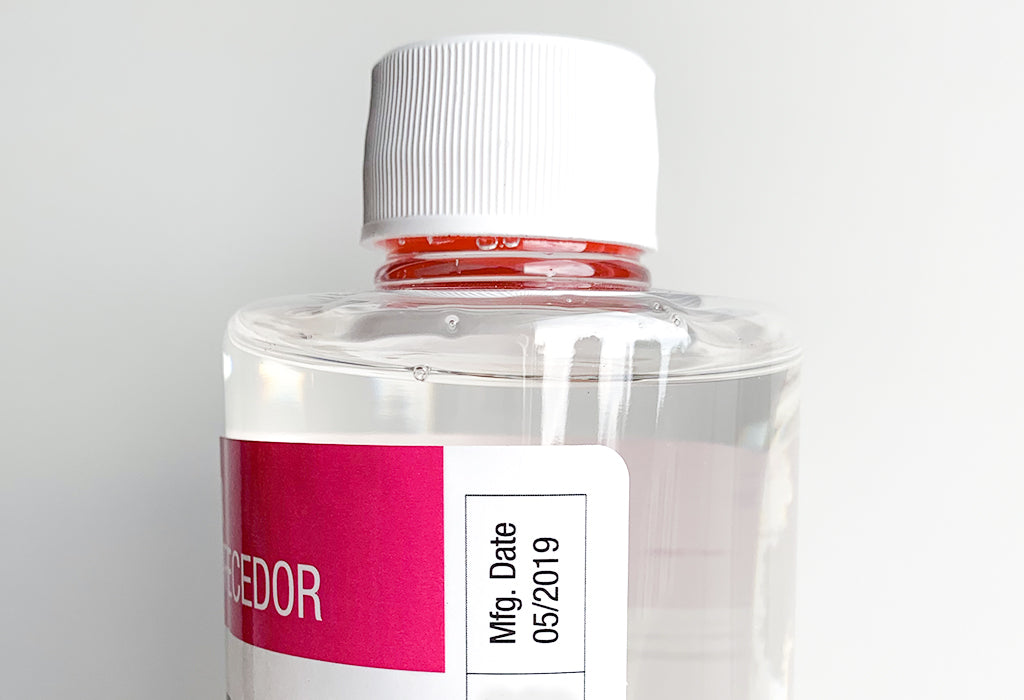
ArtResin's shelf life begins to shorten once it comes into contact with oxygen. Approximately 6 months after opening the bottles, you may notice some yellowing in the hardener. This yellowing occurs due to oxidation—a reaction with oxygen in the air that causes the amines in the hardener to discolor. With continued exposure to air, this color will deepen over time, similar to how an apple or avocado browns when cut and exposed to air.
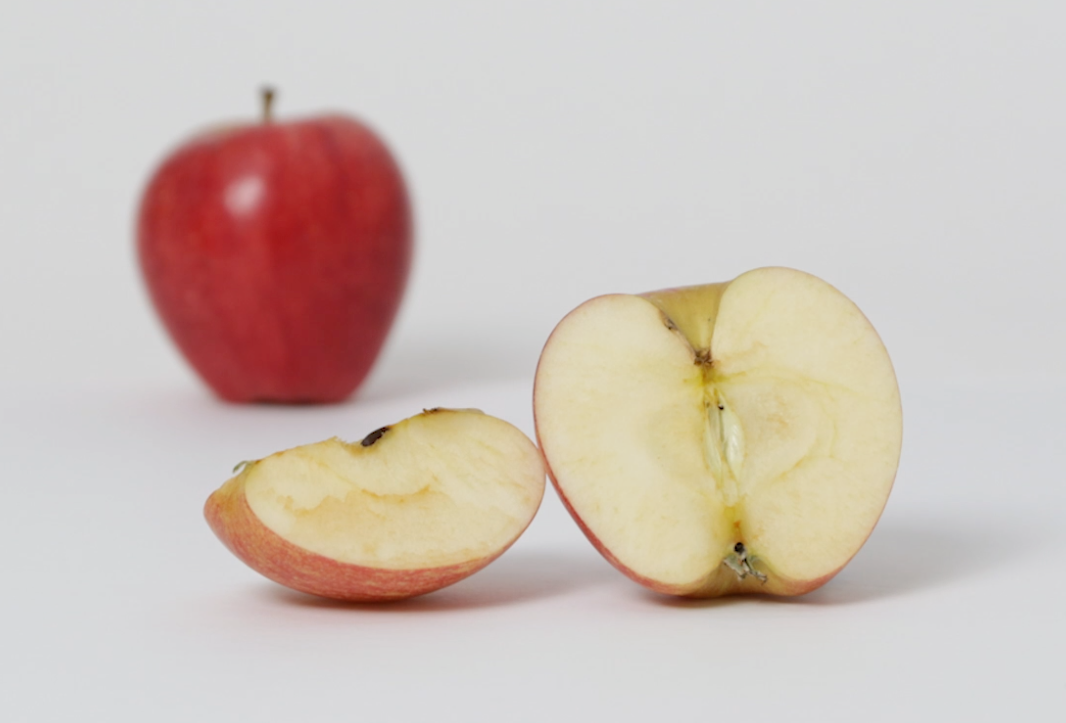
Doesn't ArtResin Protect Against Yellowing?
Just to clarify, the yellowing that occurs from oxidation is very different from the yellowing that can result from UV light damage:
-
Yellowing from oxidation happens in the liquid state due to exposure to oxygen. Once ArtResin cures, it becomes inert and is no longer susceptible to oxidation.
- Yellowing from UV light damage occurs in the cured state and is typically caused by light exposure, especially sunlight. ArtResin, however, is chemically engineered with two different types of UV inhibitors to offer the best yellowing protection on the market.
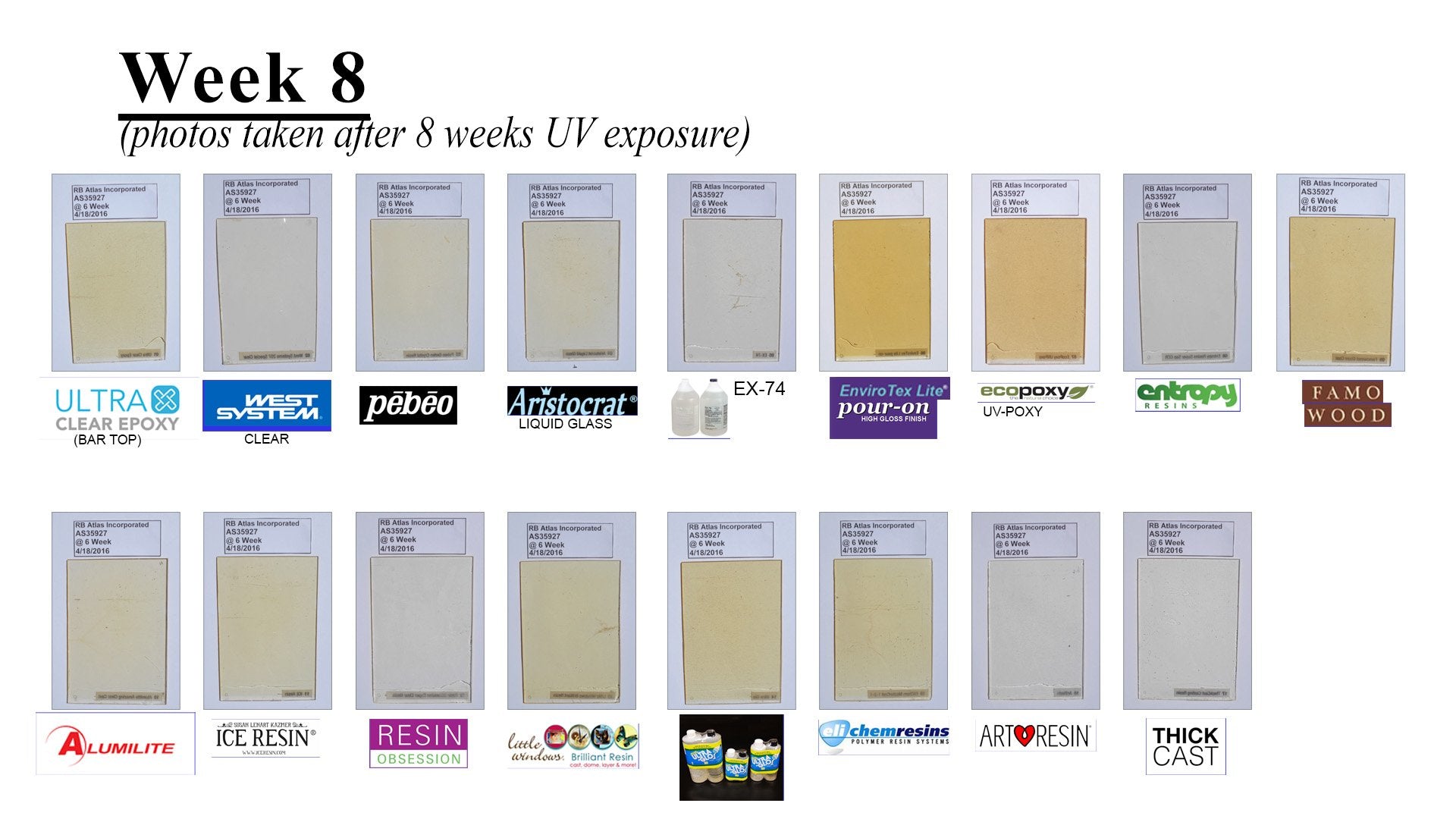
Can I Still Use Expired ArtResin?
Keep in mind that the yellowing you notice in the hardener bottle appears more pronounced due to its concentrated form. Once you mix yellowed hardener with clear resin and spread it out onto your work, the yellowing will be much less noticeable.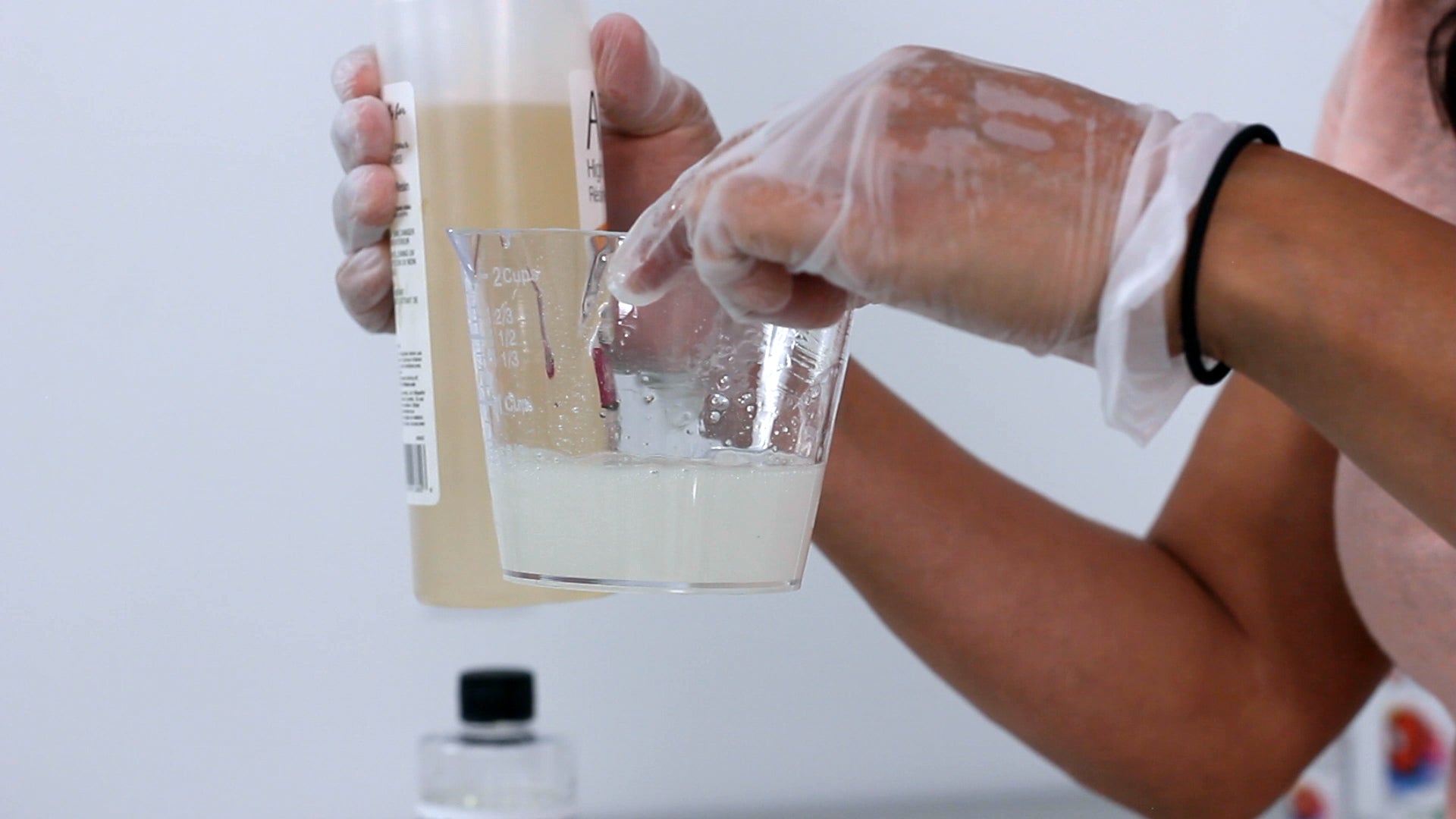
The piece on the left was coated with expired ArtResin, with hardener that had turned yellow. While it shows a slight yellow tinge compared to the piece on the right (which was made with fresh ArtResin) the yellowing is much less pronounced than it appears in the hardener bottle.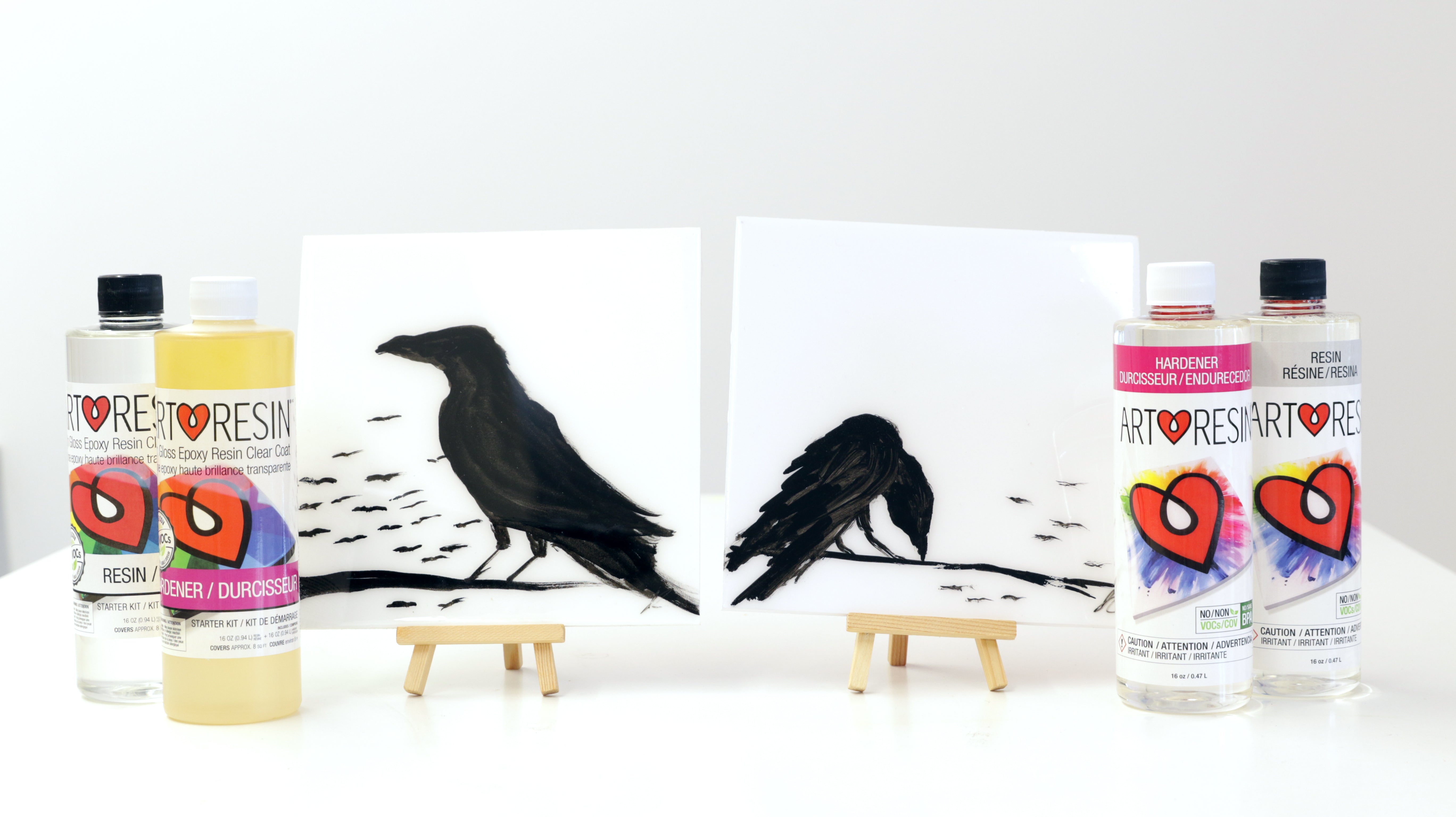
💡 TIP: Once ArtResin's resin and hardener are mixed together, they bond and the product becomes inert. This means the hardener no longer reacts with oxygen, so yellowing from oxidation stops once the resin has cured.
How To Use Expired ArtResin:
Here are 4 creative ways to use up expired ArtResin —once these pieces have cured, you won't be able to tell that the hardener was ever yellowed!
1. Use It Over Colorful Artwork
While a slight yellow tinge may be visible over white artwork, there won't be any trace of yellow when expired ArtResin is applied over colorful pieces. Bright or dark artworks effectively disguise any yellowing, making this an ideal way to use up your yellowed hardener.
❓Take a look at the two paintings below. Can you guess which one was made with expired ArtResin and which one was made with fresh ArtResin? 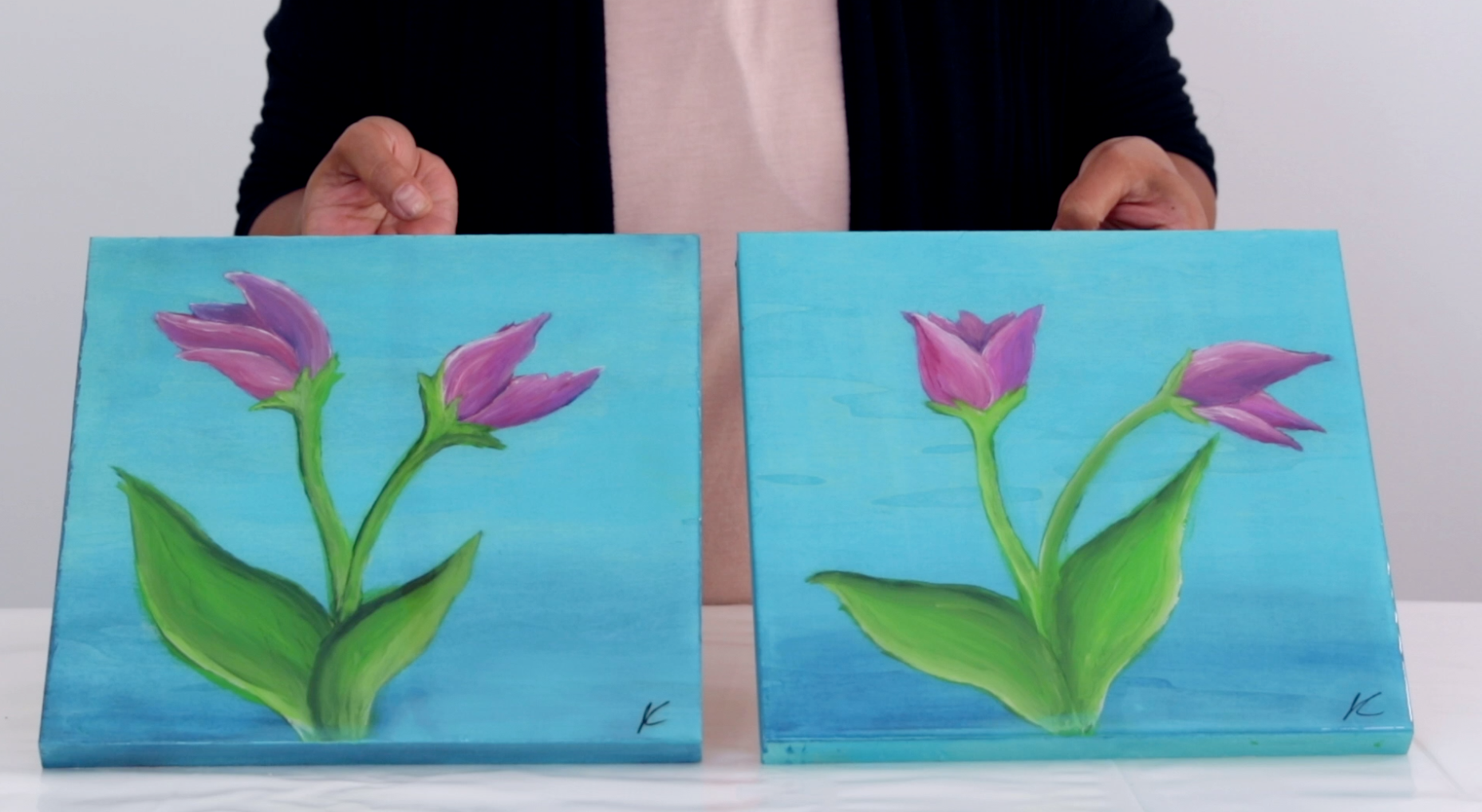
The one on the left was made with yellowed hardener!
They look the same, don't they?
💡TIP: Check out our blogs for full instructions on how to apply ArtResin to
2. Make Alcohol Ink Resin Coasters
Magic happens when alcohol ink is dropped into epoxy resin, creating fascinating effects. The more color you drop into your coaster, the better the result —making this project a fun way to use up yellowed hardener!
❓Which of these two coasters was made with yellowed hardener and which one was made with clear? See the answer below.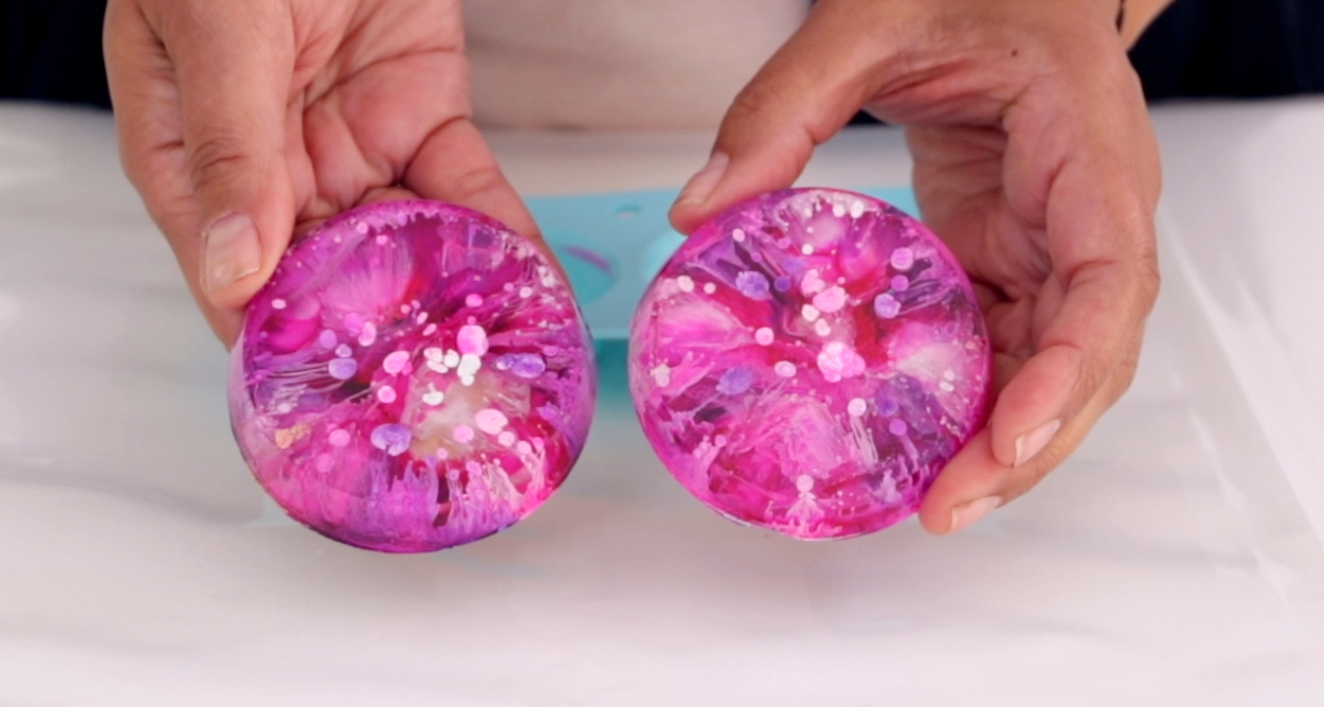
If you guessed that the coaster on the left side is made with yellow hardener, you're right!
💡TIP: For step by step instructions on how to make your own alcohol ink coaster, please see our blogs How To Make A Resin Coaster and How To Create Resin Petri Dish Art.
3. Tint It For Flow Art
Adding a colorant like ResinTint is an excellent way to mask yellowed hardener. Once you add a colorant, any hint of yellow in your epoxy resin disappears completely. Use tinted resin for creating flow art, pouring into coaster molds, or making other small castings.
❓Which flow art piece was made with brand new ArtResin?
Can you spot the difference? 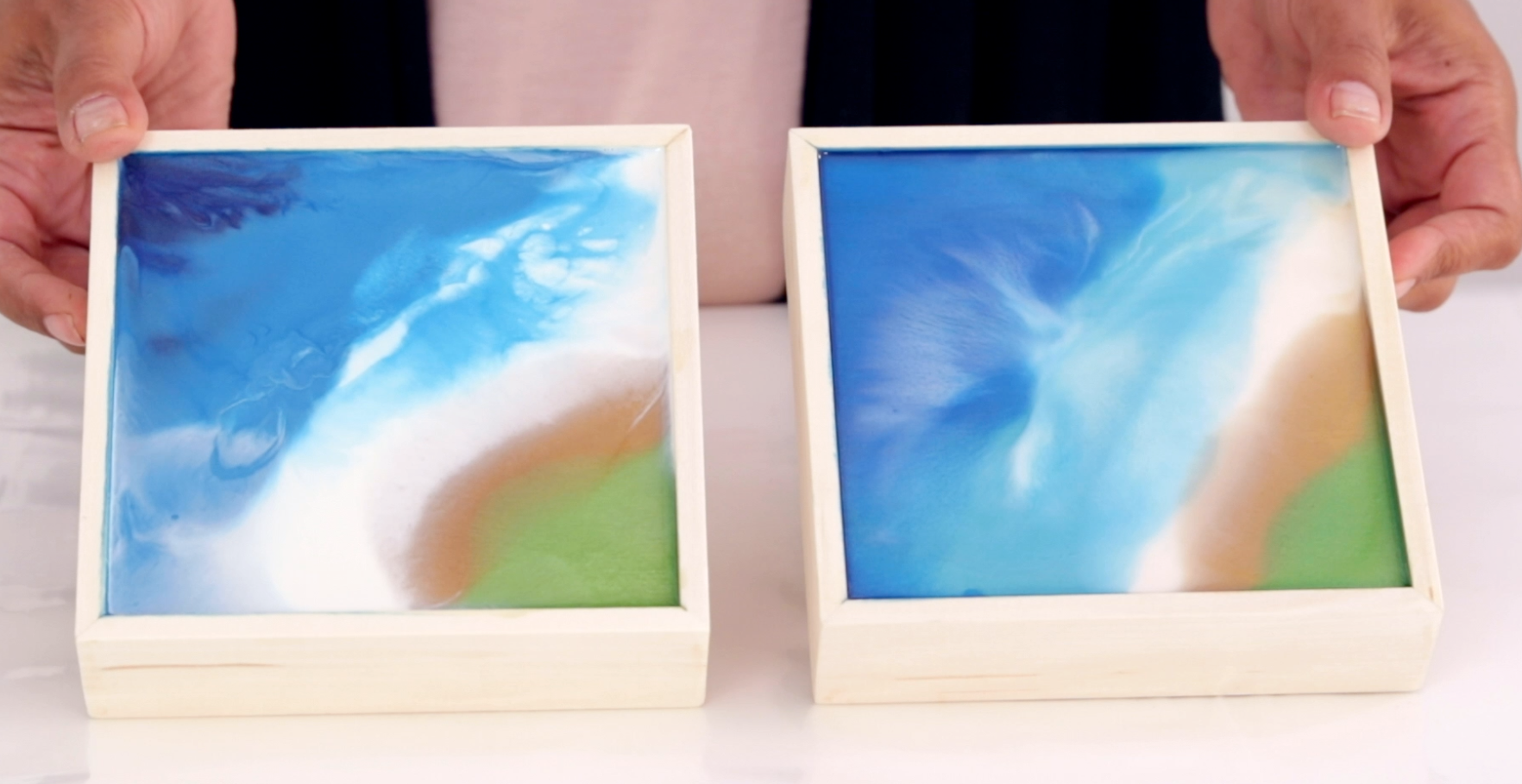
ANSWER: If you guessed the flow art panel on the left was made with fresh ArtResin ... you're mistaken! The panel on the right was made with fresh ArtResin.
It's hard to tell, isn't it? They look identical!
💡 TIP: For more information on which colorants can (and can't) be used with ArtResin, take a peek at our blog How To Color Clear Epoxy Resin.
4. Apply It Over Wood
Epoxy resin and wood are a stunning combination—resin enhances wood's grain and natural beauty, bringing it to life. Wood is also the perfect canvas to use up yellowed hardener, as its natural yellow undertones hide any hint of yellow once coated.
❓ Last one! We cut a piece of walnut into two halves: which one is coated with clear ArtResin and which one with yellowed?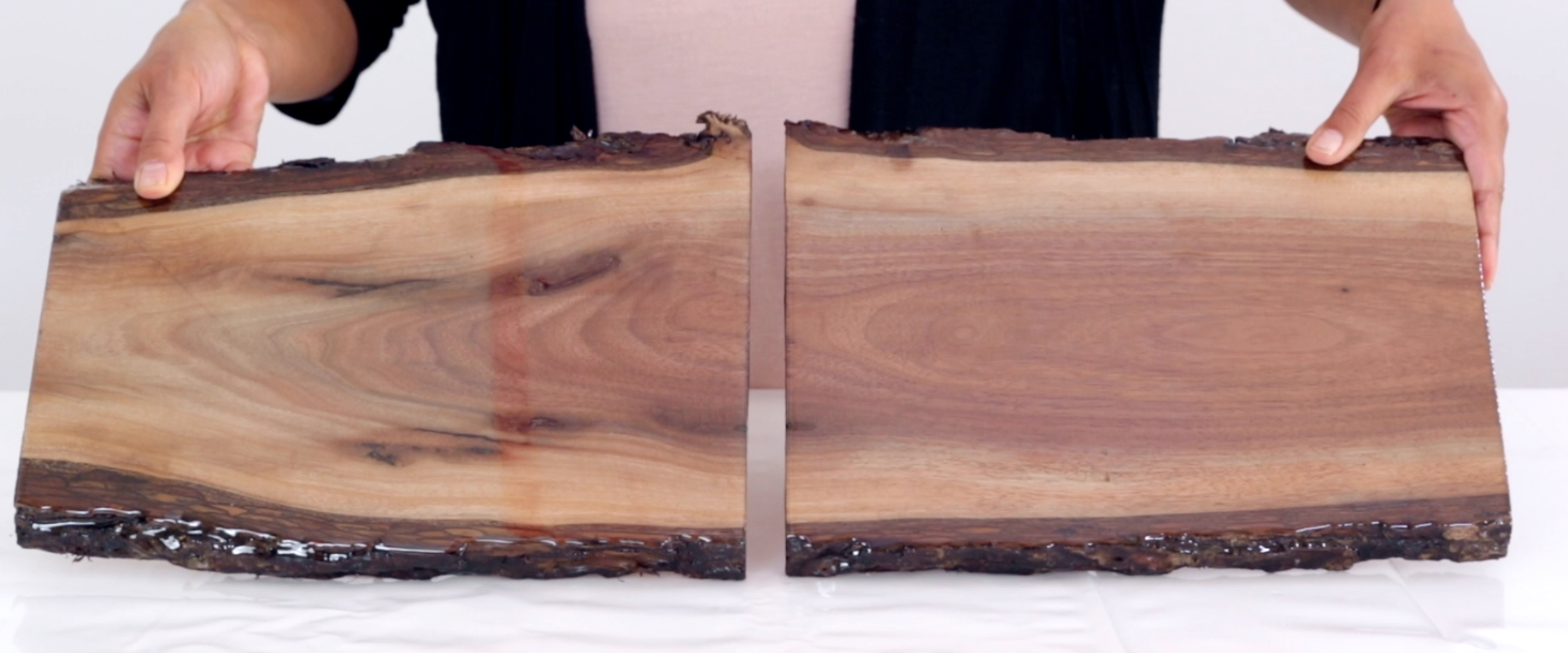
ANSWER: They both look gorgeous but the piece of wood on the left was coated with the old, yellowed ArtResin. Were you able to see a difference?
How To Prevent Epoxy Hardener From Turning Yellow
It's reassuring to know you can still use expired ArtResin, but how can we avoid reaching that point in the first place? Here are some tips to help keep your epoxy resin fresh:
- Replace the cap on the hardener: Recap as soon as you've finished pouring to reduce oxygen exposure and delay oxidation.
- Only buy as much ArtResin as you need: Estimate what you'll require for your project to avoid leftover resin.
- Check the Manufacturing Date: Look for the born-on date on the label. ArtResin's expiry date is 12 months from the manufacturing date if unopened, and 6 months once opened.
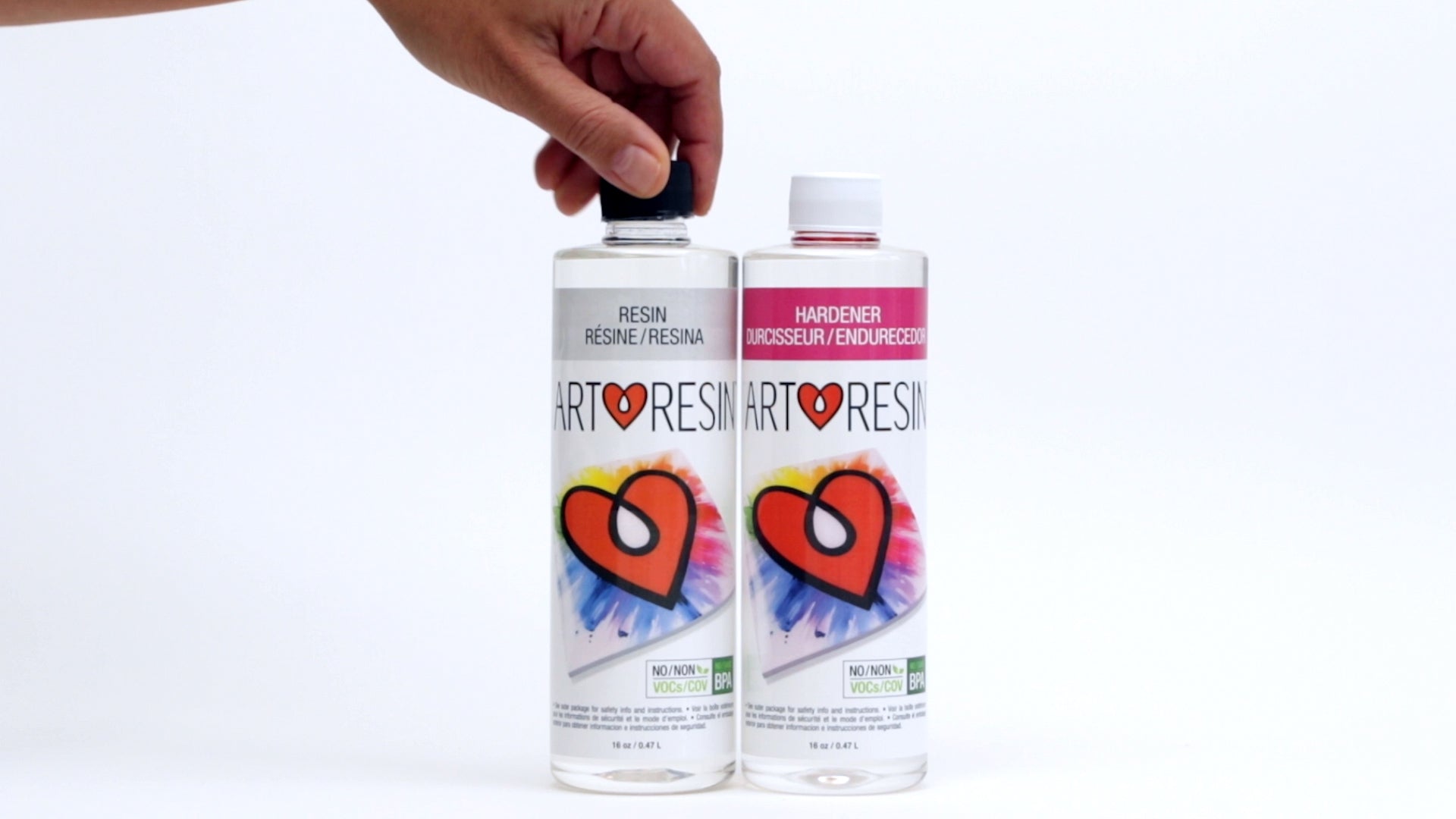
And if you find yourself the proud owner of some expired ArtResin?
Use it to create your own charcuterie board, flow art, alcohol ink coaster or add vibrant colors to resin art. With these projects, you'll never have wasted ArtResin again!
Want to learn more about epoxy resin and yellowing? Read our blogs below:
- Why Does My Resin Look Yellow?
- What Is HALS & UV Stabilization?
- Why Do Some Brands Of Epoxy Resin Turn Yellow?
- Epoxy Resin Yellowing Protection
ArtResin: The Original Epoxy For Resin Art.


